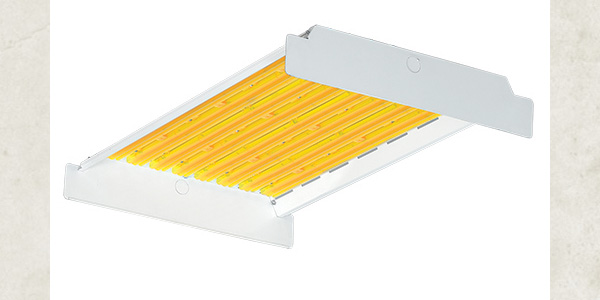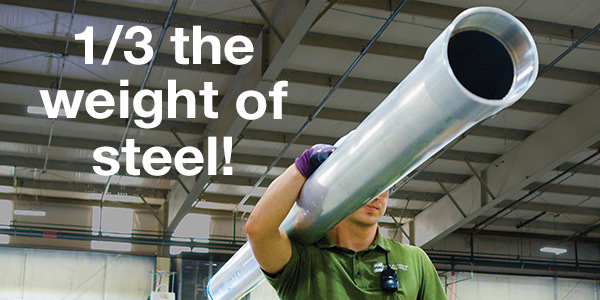Hubbell Lighting introduced a groundbreaking new LED product that solves a critical dilemma in a number of major industries. By applying the physics of the “Stokes Shift” effect, the new SpectraLoc™ LED blue spectrum suppression highbay from Hubbell Industrial Lighting converts harmful blue light under 500 nanometers to green and yellow light.
Organizations responsible for the production of milk, beer, pharmaceuticals, and semiconductors have been slow to adopt LED technology because the blue light wavelength causes photochemical degradation and photo-oxidation damage to products.
In milk production, high-energy light below 500 nanometers has been demonstrated to hasten the degradation of critical proteins and vitamins, especially riboflavin (B2), resulting in undesirable flavors. In beer production, short wavelength light causes the production of thiol compounds known as mercaptan or methanethiol, a foul-smelling chemical that can make beer smell and taste “skunky.”
These industries have been forced to protect products in their production facilities from harmful blue light wavelength with colored packing and UV coating solutions, which detract from the cost savings, energy efficiency, and superior performance associated with LEDs.
Until today. Now dairies, breweries, pharmaceutical, and semiconductor producers are free to enjoy the full benefits of LEDs without any of the sacrifice.
In production facilities, High Pressure Sodium, Metal Halide, and fluorescent lighting are still the common sources for lighting. But all of these products produce UV and other wavelengths of light below 500 nanometers. This light is then absorbed by sensitive products like milk and beer, causing adverse chemical reactions leading to the degradation of ingredients.
To alleviate these blue light concerns, producers have traditionally used colored packing and UV coating solutions on their fixtures. This is considered the industry standard, and it is widely accepted as the best solution for lighting needs. While these industries certainly understand the benefits associated with LEDs, they remain unconvinced it is a worthy investment considering the remaining issue of the blue light.
“What’s the point of covering up a new LED highbay with a UV coating if it’s going to add to the power consumption of the fixture itself?” said Joe Engle, product manager for Hubbell Industrial Lighting. “That’s what we heard in our research. The issue isn’t the LED itself; it’s that, when combined with the necessary protective measures, there’s diminishing returns.”
Recognizing this issue, Hubbell Industrial Lighting set out to develop a luminaire that would alleviate this concern and open up a new market of LED customers. The Research & Development team at Hubbell zeroed in on the development of SpectraLoc’s unique optic. When combined with the LED package, the optic absorbs wavelengths of light below 500 nanometers and retransmits at longer wavelengths. This process is called “Stokes Shift,” and it is what empowers the SpectraLoc LED highbay to convert blue light below 500 nanometers to nondestructive wavelengths.
By blocking the harmful blue light, the SpectraLoc prevents photo-oxidation and ecological disruption while maintaining the efficiency and money savings of an LED luminaire. Instead of having to consistently replace bulbs and change out protective coverings, maintenance staff will be freed up to focus on other areas of need.
The SpectraLoc will introduce these industries to what many others have already known: there are significant monetary and performance advantages with LEDs.
The SpectraLoc can exceed 19,000 lumens while only consuming 112-175 watts, averaging 108 to 110 lumens per watt. By decreasing the amount of energy needed to power the lights, the operator will achieve significant cost savings. Additional HVAC savings will be acquired when there is significantly less heat generated by the luminaire. By using less energy there’s also the option of qualifying for a rebate from the local utility.
The performance of the LEDs is far superior to legacy fixtures. In many industrial settings it’s not uncommon to find traditional light sources working harder than they should to ensure a safe working area. In addition to the energy savings, the SpectraLoc features a color-rendering index (“CRI”) of 75. This is the quantitative measure of the ability of the SpectraLoc to render colors faithfully in comparison with natural light. Not only will the SpectraLoc require less energy to operate, but also its performance will be more efficient than the previous luminaire.
Learn more at: www.hubbelllighting.com.






